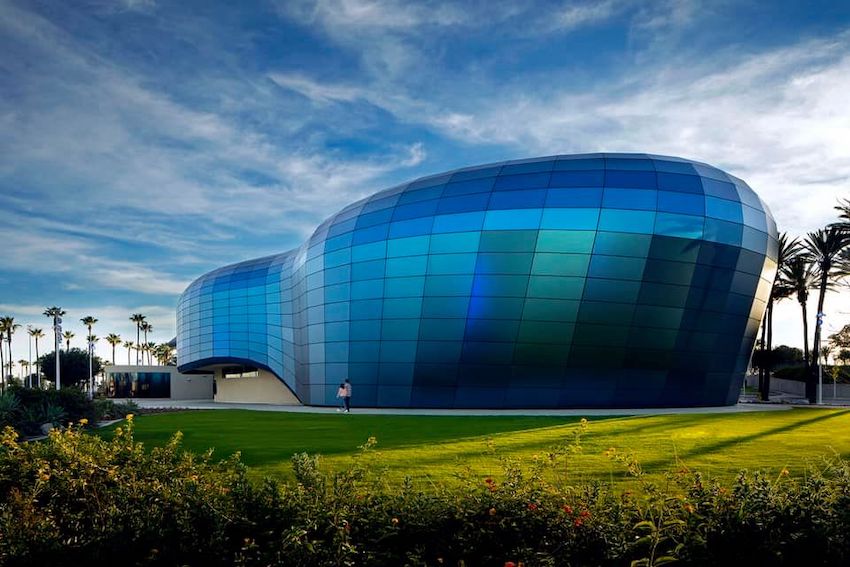Glazing: An Integral Part of Biophilic Design
Biophilic design connects people and nature within built environments
Sponsored by National Glass Association | Presented by Urmilla Jokhu-Sowell, Stephen Selkowitz, Thomas D. Culp, Ph.D, and Lisa Heschong
Webinar On-Demand
This webinar is part of the Glass and Glazing Design Academy
Biophilic design connects people and nature within built environments. More than simply ensuring basic comfort, biophilic design enables the creation of spaces that improve lives and experiences. The connection to nature and maintaining alignment with its rhythms are vital to maintaining good health. In addition, access to daylighting and view has been linked to reduced fatigue and stress, greater focus and attendance among office workers, improved performance and attention among students, and faster healing among patients. Glazing design and selection is thus an integral component of biophilic design. Glass provides views to natural elements outside the building—whether trees and plants close to the building or far-off vistas—while bringing natural light inside. But glass and façade design can be challenging – they must contribute to a low energy/low carbon building stock and also provide thermal comfort, glare control and privacy for occupants when needed. This webinar will introduce the student to the concept of biophilic design, how biophilic design can benefit occupants, and how glazing can be used to connect occupants with the natural world while meeting other goals such as security, energy efficiency, and acoustic comfort.
The presentations will be followed by a moderated discussion and address several key issues.

Photo courtesy of National Glass Association
 |
Urmilla Jokhu-Sowell, Technical and Advocacy Director has over 20 years’ experience in the glass and glazing and fenestration industry. Her current position includes overseeing all technical and advocacy activities for NGA. Urmilla holds leadership roles at several standards organizations including ASTM International, International Standards Organization, and ASHRAE. She earned both her Bachelor and Master of Science degrees in Civil Engineering from Texas Tech University and is a licensed Professional Engineer. |
 |
Stephen Selkowitz, Principal, Stephen Selkowitz Consultants, is recently retired as Senior Advisor for Building Science, LBNL and is now a consultant and advisor to global building industry clients. He has extensive technical expertise on advanced glazing and window technologies, building façade systems, daylighting designs and integrated building system solutions. Over his 40-year career at LBNL, he started and led the Windows and Daylighting Group and served as Head of the Building Technologies Department for 25 years, partnering with industry to develop and demonstrate new technologies, systems, processes and design tools that address energy, sustainability and occupant comfort. |
 |
Thomas D. Culp, Ph.D, is the owner of Birch Point Consulting, located in La Crosse, Wisconsin. After earning a Ph.D. in Chemical Engineering from the University of Wisconsin, Dr. Culp has spent the last 21 years in the glass and window industry in the areas of energy efficient glazing and window performance, low-e glass coatings, and building code development. He is co-vice-chair of the ASHRAE 90.1 standards committee and is an active participant in the International Code Council code development hearing process. He serves as the Energy and Green Construction Code consultant for the Aluminum Extruders Council, National Glass Association, and it’s Glazing Industry Code Committee. |
 |
Lisa Heschong is perhaps best known for having led the research team that found a correlation between daylight in classrooms and improved student performance. She has also completed numerous other field studies of building energy and human performance in a variety of building types, and completed numerous case studies evaluating building performance. She also led a large, international effort to establish a new set of climate-based daylight performance metrics, which are now serving as a reference standard for LEED and other codes. As an energy consultant, she participated in the development of energy efficiency codes and standards in California and at the national level, including helping to pioneer the outdoor lighting codes for California’s Title 24. She led HMG and TRC’s multifamily energy efficiency programs, both new and retrofit, for the California utilities for 15 years, and launched research looking at the impacts of tenant behavior on energy use. |
The National Glass Association (NGA) is the largest trade association serving the architectural glass and metals industry. A technical and educational resource, NGA envisions a future in which glass is the material of choice to enhance spaces where people live, play, learn, and work.
Originally published in Architectural Record
Originally published in July 2021
LEARNING OBJECTIVES
- Define the tenets of biophilic design and its impact on human physiology and well-being.
- Describe two ways that daylighting can affect occupant comfort and productivity.
- Explain how glass elevates and facilitates the goals of biophilic design and daylighting.
- Analyze how glazing materials might be used to shape the human experience of the built environment, now and in the future.











